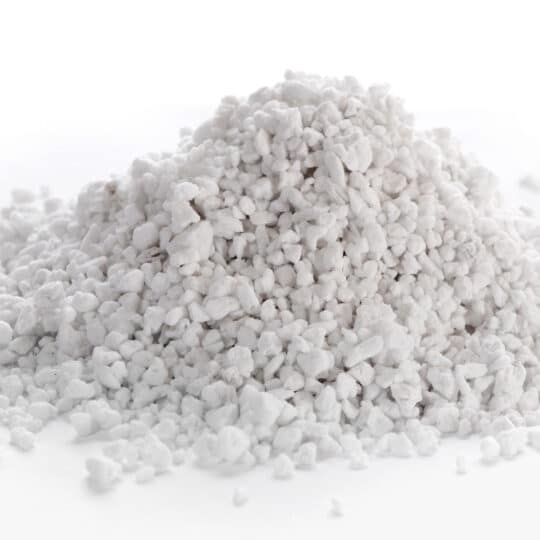Lawn & Garden
Discover the many practical uses of our minerals for outdoor gardening
While it is a well-known fact that perlite plays an essential role in commercial plant propagation, did you know perlite can also be used to improve the soil, and beautify the landscape around your home?
Spending time outdoors with plants and in our gardens can relieve stress, improve physical health and nutrition, and positively impact our lives on many levels. Wherever plants are involved, or the health of the soil needs improvement, perlite lends a helping hand or is otherwise a valuable tool in the hands of a successful gardener.
Using Perlite with Different Soil Types
Regardless of your soil type, adding horticultural grade perlite will immediately improve its structure and bring about long-lasting benefits. Fine grade perlite can be used to add more moisture holding capacity, and coarser grades will increase aeration.
No matter which size you have on-hand, horticultural grade perlite improves both the moisture-holding capacity of the soil, as well as introducing all-important pore spaces for air and water to penetrate the root zone. Depending on the size, horticultural grade perlite holds up to 8x its weight in water, while increasing the level of oxygen available to plant roots and promoting healthy biological activity. Because perlite is completely natural and stable, it continues to provide these benefits year after year.
Vegetable and Flower Gardens
- Condition gardens or new lawns by cultivating either by hand or with a roto-tiller, to a depth of 150-300 mm (6-12 inches).
- Place a generous layer of a mixture of 1/2 perlite and 1/2 peat moss or compost and mix into soil. (If the soil is already rich in organic matter, the peat or compost may be eliminated.)
- If the garden area is very large, the home gardener may condition only the rows or areas where planting is to take place. If the procedure is continued for 2-3 years, the entire garden will be conditioned.
Lawns
- Adding a layer of absorbent perlite beneath new sod can reduce irrigation by up to half, as demonstrated in arid regions of the Middle East.
- Poorly aerated or drought prone lawns can be improved with applications of perlite. The lawn area should be plug aerated, and perlite gently raked into the holes or worked in with irrigation water. As much as 50 L/m2 (1 gallon/sq ft) may be required to achieve the desired result. Use a series of smaller applications over several seasons to work up to the desired
concentration.
Patio Planting
Perlite is a valuable component of growing media used for container growing and patio planters. Planters filled with a perlite soil blend are lightweight even when saturated making them easier to rearrange or move to protect plants against adverse weather.
- A suggested soil mix for patio planters is 1/3 perlite, 1/3 peat moss, and 1/3 composted wood product such as bark or shavings.
- Garden planters and raised beds benefit from the added moisture-holding capacity that perlite provides by helping to retain and conserve water, and supply moisture in just the right amount for optimal plant development.
Planting Shrubs, Trees and Ornamentals
- Dig a planting pocket larger and deeper than the plant roots to give roots plenty of room to grow out and down. Consult local horticulture and landscaping guidelines for the recommended size and depth of the hole to be dug.
- Add perlite to the hole to cushion plant roots and create additional water retaining capacity.
- Add a mixture of 1/3 soil, 1/3 perlite, and 1/3 peat moss or compost to the hole.
Rooftop Gardens and Vertical Forests
For the apartment dweller with a limited outdoor roof garden, perlite can be of enormous benefit. The weight of planting mixes is very important when the strength of the supporting structure must be considered. Wet, sandy loam can weigh as much as 1,920 – 2,240 kg/m3 (120-140 lb/ft3) while a soil mix consisting of equal parts of perlite and peat moss weighs only about 560 kg/m3 (25 lbs/ft3) when wet.
As a result, a perlite growing mix can be several times as deep as a conventional soil mix without increasing weight. This enables architects and engineers to include larger planting areas or deeper garden beds in their designs. This also opens up the possibility for retrofitting older rooftops where the added weight of plantings and retained moisture would normally be of concern. Rooftop gardens improve air quality by absorbing pollutants and producing oxygen, improve thermal performance, and increase biodiversity in our cities.
Contact Us
Contact us today to learn how we can help your processes, buy direct or from a distributor, or request a free sample of our products. We look forward to hearing from you.
